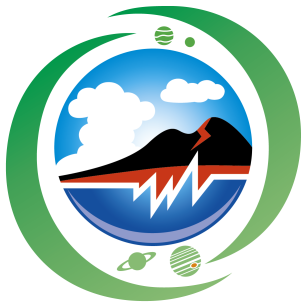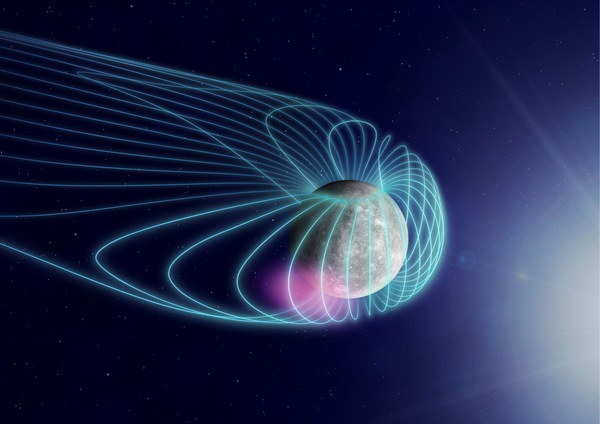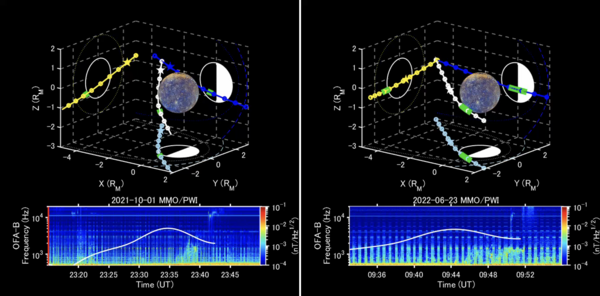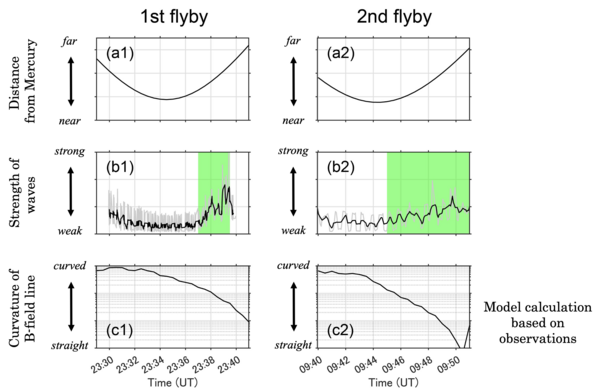Topics 2024.04.16
Discovery of Hermean chorus waves that create the source of aurora by BepiColombo, Euro-Japan joint mission to Mercury
Fig. 1: Image of chorus wave generation on Mercury's morning side.(Mercury image: NASA/Johns Hopkins University Applied Physics Laboratory/Carnegie Institution of Washington)
During its first and second closest approaches to Mercury in 2021 and 2022, the BepiColombo mission first discovered chorus waves, electromagnetic waves that strongly scatter and accelerate electrons, localized in the dawn side region of Mercury. The high-energy particles scattered by these waves can be the source of the "X-ray aurora emission on Mercury's surface" (Figure 1, Ozaki et al., 2023).
Like Earth, Mercury has a magnetic field and a magnetosphere, a region dominated by planetary magnetic field. In this region on Earth, "chorus waves", a kind of electromagnetic waves, are widely observed on the nightside to dayside. If it is converted to sound, it is like a birdsong (e.g., NASA Van Allen Probe observation - https://youtu.be/SGjIJaMqnUI; JAXA Arase observation - https:// ergsc.isee.nagoya-u.ac.jp "The Sound of Geospace"). The Arase satellite and others have shown that these pretty waves efficiently accelerate low-temperature particles to high energy and contribute to the generation of radiation belts (Van Allen belts). The sudden increase of radiation levels caused by this process can cause problems for the satellites that are the infrastructure of our civilization.
However, Mercury's magnetic field is weak, about 1/100 that of the Earth. It is not known whether a similar mechanism will work.
BepiColombo is a Euro-Japan joint mission. Now, it forms a cruise composite with a combination of the European Mercury Planetary Orbiter (MPO) and the Japanese Mercury Magnetospheric Orbiter (nickname: Mio), and on its long journey to Mercury. The spacecraft uses Mercury's gravity to slow down for each of its five closest approaches to Mercury from 2021. After approaching Mercury's orbital velocity, it will be injected into Mercury's orbit in December 2025.
The Mio spacecraft is equipped with Plasma Wave Investigation (PWI), an electromagnetic wave receiver jointly developed by Japan and Europe led by Tohoku University. The equivalent instrument was not on NASA Mariner 10, which approached Mercury three times in the 1970s, nor on NASA MESSENGER, which orbited Mercury from 2011 to 2015. So, we will have the honor of being the first ever to make such an observation.
The long-traveling Mio spacecraft is attached with the MPO in the transition orbit. Our PWI has four 15-m long electric field antennas that can only be deployed after Mio is separated from the MPO. The PWI also has a magnetic field sensor, but now before deployment of the 5-m long boom. So, the sensor is located near the outer wall of the spacecraft, and disturbed by the magnetic fields created by large current in the spacecraft.
Despite the insufficient situation, we first discovered electromagnetic waves above several hundred Hz at Mercury during the first (2021) and second (2022) flybys, and discovered strong chorus waves (Figure 2)! On Earth, synchronism between chorus waves and auroral emission has been discovered on the Arase satellite and others. It is thought that this is because high-energy particles disturbed by chorus waves fall along magnetic field lines, and cause auroras, which light up the polar atmospheres in various colors.
Would Mercury's chorus waves cause such a phenomenon? On Mercury, the MESSENGER spacecraft discovered X-ray emissions from Mercury's surface. It can be thought that energetic particles disturbed by the chorus waves fall directly to the surface of Mercury without dense atmosphere, and can cause an "X-ray aurora".
A different aspect from that of the Earth was also found. During the first and second flybys, strong chorus waves were found only in a limited region on the Mercury morning side (Figure 2). There must be some peculiar mechanism for the unexpected "localization". We are considering that it can be caused by the shape of Mercury's greatly distorted magnetic field lines. Mercury's magnetic field is much weaker than that of the Earth, and is more greatly distorted by the solar wind blowing from the Sun. In both flybys, the dawn side had the least distorted magnetic field lines and the energetic particles were easier to follow the magnetic field lines and have helped generate the chorus waves (Figure 3).
This analysis was performed by the magnetic field wave observation team of PWI (Japan: Kanazawa University, Tohoku University, Kyoto University, etc.; France: Laboratoire de Physique des Plasmas). Other results from the closest approach observations have also been obtained in estimating the density (Griton et al., 2023). We look forward to the day when we can start working on the mysteries of Mercury with full-scale observations, which will begin in the spring of 2026.
Yasumasa Kasaha
Planetary Plasma and Atmospheric Research Center
Figure 2: Chorus waves observed during Mercury's closest approach. Strong waves in a few hundred to 2 kHz were found on the dawn side after the first (left: 23:36-23:40) and the second (right: 9:48-9:52), after the closest approach.
Figure 3: Relationship between (up) distance from Mercury, (middle) chorus wave intensity, and (bottom) magnetic field curvature for the Mercury closest approach. Chorus waves are stronger on the dawn side, which corresponds to "smaller magnetic field curvature" (in green). (Courtesy: Kanazawa University, Tohoku University, and Kyoto University)
<Reference>
[Published paper of this result]
Ozaki, M., S. Yagitani, Y. Kasaba, Y. Kasahara, S. Matsuda, Y. Omura, M. Hikishima, F. Sahraoui, L. Mirioni, G. Chanteur, S. Kurita, S. Nakazawa, G. Murakami (2023). Whistler-mode waves in Mercury's magnetosphere observed by BepiColombo/Mio. Nature Astronomy, https://doi.org/10.1038/s41550-023-02055-0
[Another result during both flybys]
Griton, L., K. Issautier, M. Moncuquet, F. Pantellini, Y. Kasaba, H. Kojima (2023). Electron density revealing the boundaries of Mercury's magnetosphere via serendipitous measurements by SORBET during BepiColombo first and second Mercury swing-bys. Astron. Astrophys. 670, A174. https://doi.org/10.1051/0004-6361/202245162
[Introduction of BepiColombo, Mio, and PWI]
JAXA BepiColombo: https://global.jaxa.jp/projects/sas/bepi/
JAXA ISAS Mio spacecraft:
https://www.isas.jaxa.jp/en/missions/spacecraft/current/mmo.html
Mio Plasma Wave Investigation (PWI)
https://miosc.isee.nagoya-u.ac.jp/about/satellite/pwi.php



